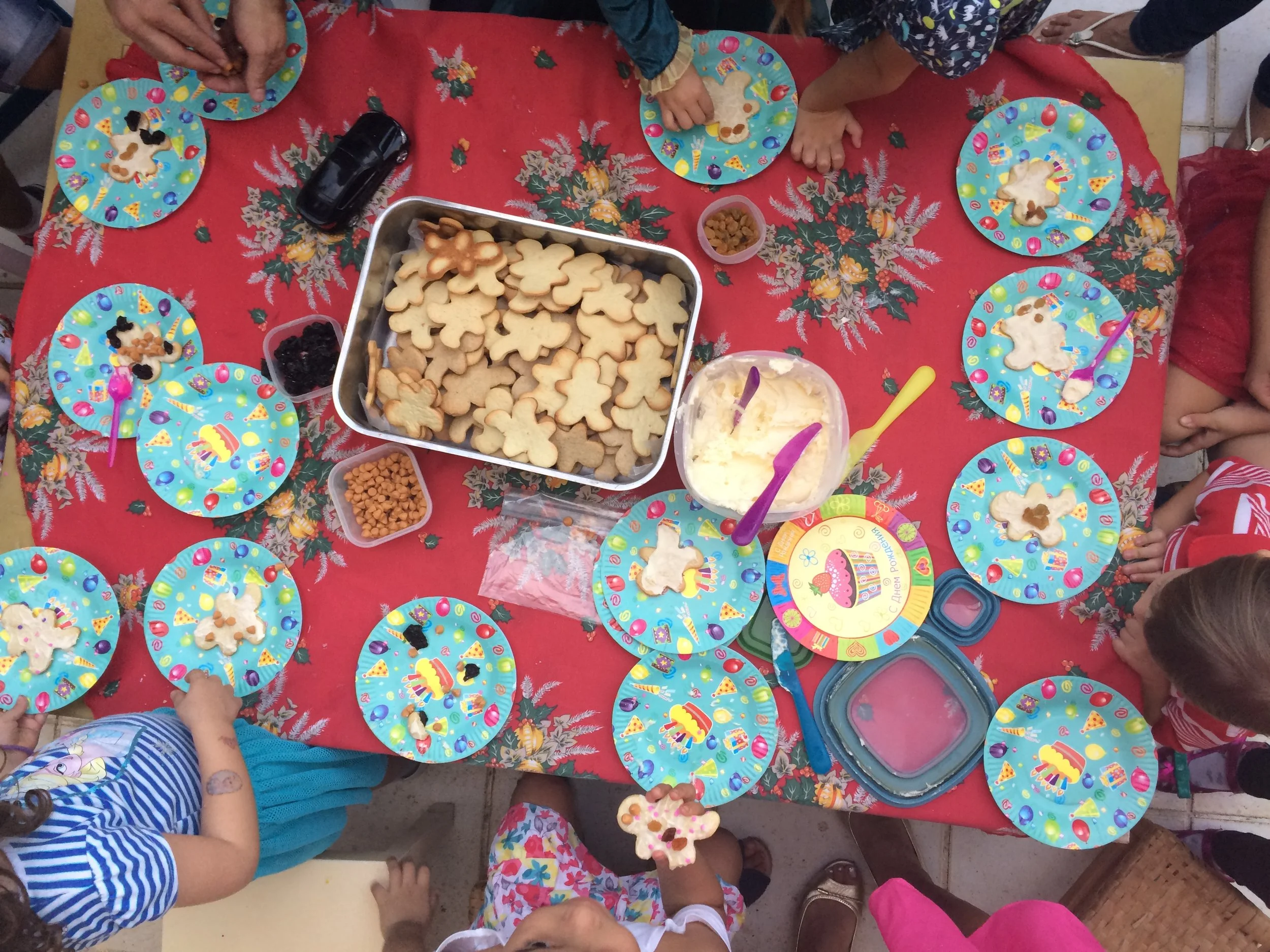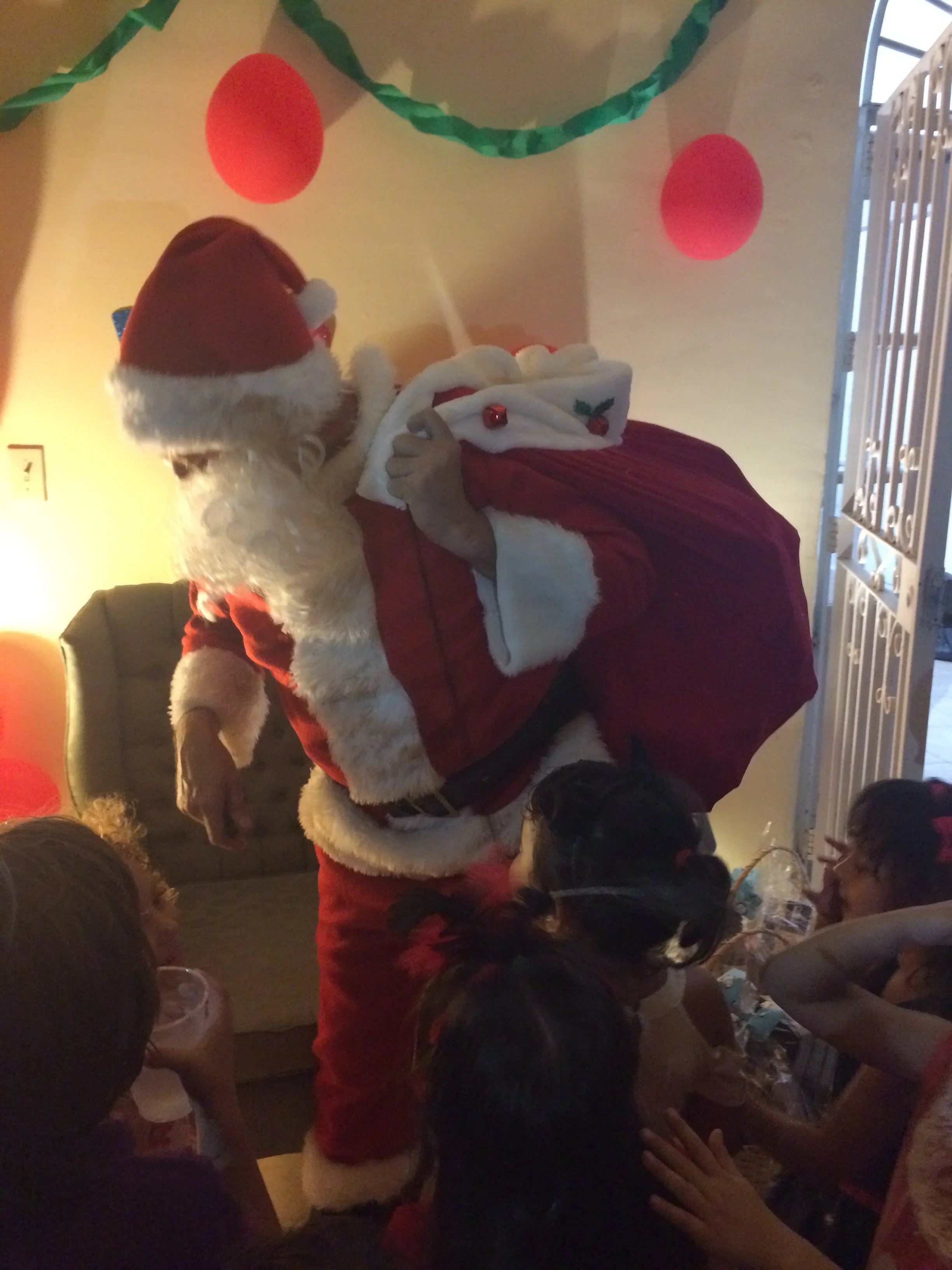From all the festive displays in our neighborhood, it's hard to believe that Christmas was once banned in Cuba. Between the late 1960s until the late 1990s, displays of the holiday in public and even in homes were banned. Cubans were afraid of putting up Christmas trees in their living rooms. Now, our neighbors are taking their artificial evergreens out of their closets and dusting them off. Businesses and churches are putting up blinking lights and inflatable Santas with gusto. Below are some of my favorite photos of the season:
This Catholic church near our home is one of the biggest in town. One weekend morning, my family and I walked through to see a worker putting up Christmas decorations above the altar. Cuba is one of the least Catholic countries in Latin America, because of Communism and Fidel Castro's policies. After many decades of not being allowed to worship openly without being persecuted, Catholics are growing slightly in numbers these days, and many Cubans -- religious are not -- are beginning to celebrate Christmas.
We got into the spirit of a Cuban Christmas by wrapping one of our bigger gifts to the kids (a toy horse stable) with Granma, the one daily newspaper we get in Cuba. Wrapping paper is in short supply, and the newspaper worked well, even if there were few, if any, mentions of Christmas in this ad-free, Communist newspaper this month.
A neighbor displays a nativity scene below her Christmas tree. She recalls the days when she and her family were not able to celebrate Christmas openly. When she was young, she remembers finding a Christmas tree hidden away in the closet at her grandmother's house. Though her grandmother had become the head of the neighborhood watch group and had to pledge her allegiance to Communism, she couldn't bring herself to get ride of her tree.
This was one of the few homes in our neighborhood that was lighted up during the season. Part of the reason that few homes go through the effort is practical; while housing is often free in Cuba, electricity is not.
One of the things you can always find in Cuba is pork; this pork seller has been extremely busy over the last few weeks, with Cubans getting ready to prepare meals for both La Noche Buena (Christmas Eve) and New Year's Eve, the two biggest holidays of the year.
"There is charcoal" reads the sign at the local farmers' market, a reminder that the holidays are around the corner. (Normally, there isn't charcoal.)











